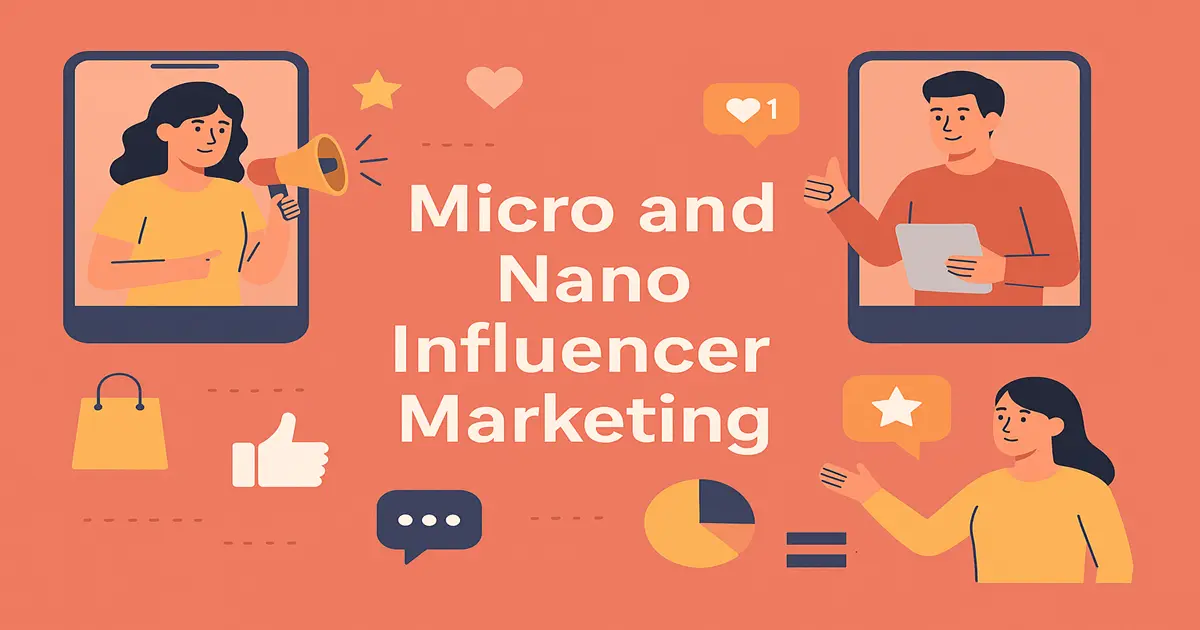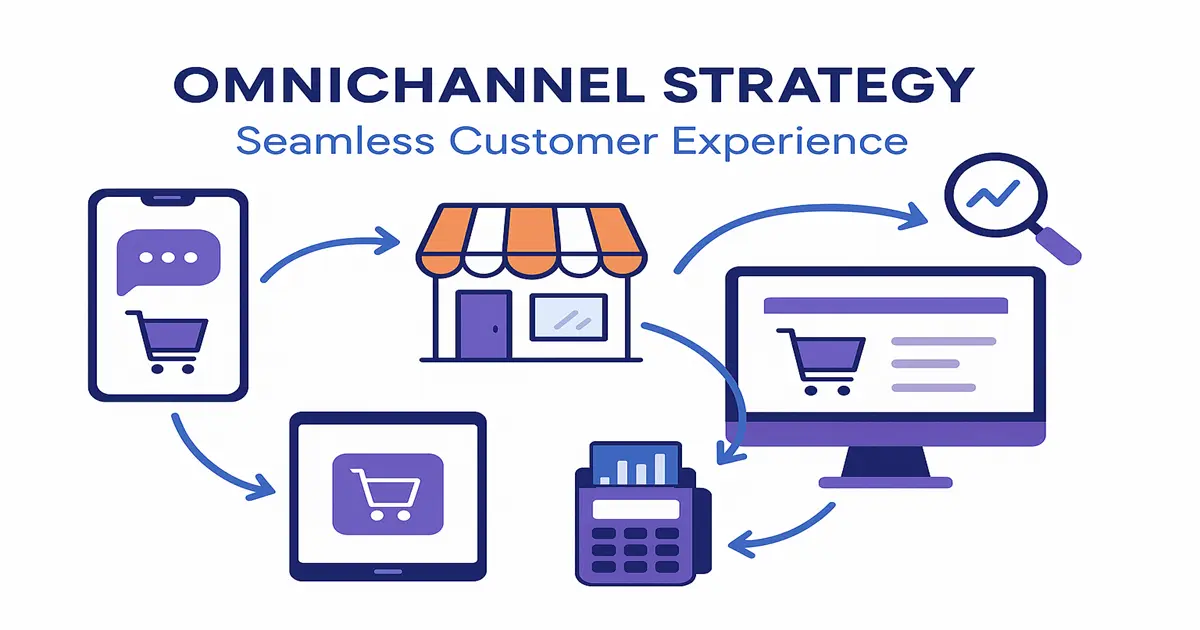Introduction
Is Your Business Ready for an Omnichannel World?
Are you delivering integrated, linked experiences to your customers across all touchpoints? In today’s hyper-connected digital landscape, a single or even multi-channel experience is not enough. Consumers interact with businesses via websites, apps, store visits, social media, email, chatbots, and more, and they expect that these experiences will be linked and personalized. That’s the role of a well-planned Omnichannel Strategy.
While multichannel approaches simply offer more than one channel, an omnichannel approach unifies each channel into a single customer experience. It is not about being everywhere—it is about being everywhere with consistency, relevance, and usefulness. If your customer starts on Instagram and finishes in-store, or builds a cart on mobile and checks out on desktop, the experience must be cohesive and consistent.
As 2025 brings even higher consumer expectations, the companies that are thriving today are ones that are masters at omnichannel experiences. Recent studies have discovered that firms employing omnichannel strategies enjoy 91% higher year-over-year customer retention compared to companies that don’t. That’s a game-changer.
Here in this guide, we’ll delve deeply into why omnichannel strategy matters, what are its main attributes, real-world case studies of companies winning with it, a step-by-step process to build your own, and answer frequently asked questions to set you off in the right direction.
Let’s find out how you can supercharge your customer experience, and boost retention, and revenue with a data-backed omnichannel strategy.
Why Omnichannel Strategy Matters
As online and offline worlds keep on overlapping, customer expectations have left behind linear sales portals and marketing funnels. Customers anticipate holistic experiences and an omnichannel strategy provides the roadmap to deliver just that.
1. Changing Customer Behavior
Consumers don’t think in channels—they think inconvenience. Your customer might see your ad on Instagram, visit your website on a desktop, and complete the purchase on a mobile app. Without an omnichannel strategy, these experiences would likely feel disjointed and frustrating. With it, they feel intentional and rewarding.
2. Increased Engagement and Loyalty
A consistent and personalized experience across channels builds trust and strengthens customer relationships. According to Harvard Business Review, customers who have used more than four channels have spent 9% more in the store compared to customers who have used a single channel. The right omnichannel strategy allows businesses to deliver personalized experiences that foster brand loyalty and repeat business.
3. Higher Revenue Opportunities
Companies that have employed omnichannel strategies have seen as much as a 30% increase in Lifetime Customer Value (LCV). When the customer experience is consistent and personalized, customers spend more, respond to promotions, and advocate for the brand.
4. Better Data and Insights
Omnichannel strategy is not only good for the customer—it’s also good for business. By tracking the behavior of customers across a multitude of touchpoints, businesses come to know preferences, timing, and purchase triggers more intimately. It’s what makes personalization at a scale not only possible but powerful.
In 2025 and beyond, your brand must be where your customers are—making every experience count. That’s the promise of an effective omnichannel strategy.
Key Features of a Successful Omnichannel Strategy
To develop an actually successful omnichannel strategy, brands need to incorporate key elements that provide performance, continuity, and value.
1. Unified Customer Data Platform (CDP)
A strong data spine is imperative. A CDP integrates customer data from all platforms—CRM, website, social media, apps, and in-store systems—enabling companies to create 360-degree customer profiles for hyper-personalization.
2. Channel Integration
Having a presence on multiple platforms is not enough; they need to work together as well. Site, app, email, SMS, chat, and in-store systems must be integrated in real-time so that customer activities in one channel impact the experience in another. Examples: cart reminders, loyalty points, or saved preferences.
3. Consistent Brand Messaging
Your tone, visuals, and messaging must be consistent across channels. No matter if an individual is reading your tweet or speaking with a support rep, they should experience the same professionalism and brand personality.
4. Personalized Experiences
More than a first-name greeting in an email, customers nowadays anticipate personalized product recommendations, dynamic content, and behaviorally triggered messages. This must be embedded in your omnichannel experience.
5. Real-Time Analytics
Decision-making should be data-driven. Real-time analytics dashboards allow businesses to monitor campaign performance, optimize touchpoints, and respond to customer needs faster.
6. AI and Automation
AI personalizes to the next level by anticipating behaviors, automating interactions, and customizing recommendations based on past interactions. Chatbots, AI-driven product recommendations, and automated re-engagement emails are among the most critical elements of a smart omnichannel strategy.
Case Studies: Brands Winning with Omnichannel Strategy
1. Starbucks
Starbucks nailed omnichannel with its rewards app. Customers can reload their card via the app, website, or in-store—changes are reflected in real-time. They receive personalized promotions based on behavior and location, driving engagement and loyalty.
2. Sephora
Sephora uses omnichannel to bridge online and in-store experiences. Their mobile app allows users to virtually try on makeup, read reviews, and book in-store beauty consultations. Purchase history and preferences are saved across all channels.
3. Nike
Nike’s omnichannel experience includes their app ecosystem, e-commerce website, and retail stores. The Nike App is also integrated well with in-store experiences, offering product reservations, personalized recommendations, and exclusive promotions.
4. Disney
Disney provides one of the most integrated omnichannel experiences—starting with their website, planning tools, MagicBands, and park apps. Each touchpoint works together in concert, giving customers full control of their experience at the moment.
5. Target
Target’s strategy is an online/in-store integrated shopping experience. Shoppers can browse online, check store inventory, and order online for delivery or pickup. Their app even provides in-store maps, digital coupons, and loyalty rewards.
Each of these brands has one thing in common: they leverage an omnichannel strategy to eliminate friction, pre-empt needs, and delight customers at every point.
How to Build an Omnichannel Strategy in 2025
Ready to create your high-converting omnichannel strategy? Here are the essential steps to take:
1. Audit Your Current Channels
Start by mapping all the touchpoints your customer interacts with—website, mobile app, social media, email, customer service, etc. Identify which are siloed and where data or experience gaps exist.
2. Centralize Your Customer Data
Invest in a robust CDP or CRM that will consolidate customer data from all touchpoints. This will be the basis of your segmentation and personalization initiatives.
3. Create a Unified Customer Journey
Design an end-to-end customer journey that flows rationally across channels. Consider how a customer would discover your product, engage, purchase, and return—and do it all across multiple platforms.
4. Implement Cross-Channel Messaging
Make your channels (email, SMS, push notifications, social media) coordinated so that customers receive the appropriate message at the appropriate time—without overlap.
5. Personalize at Every Step
Use behavior data, purchase history, and preferences to tailor product suggestions, offers, and content to each customer.
6. Train Your Teams
Omnichannel success requires harmony among marketing, sales, support, and IT. Educate teams on the customer journey and grant everyone visibility into customer data.
7. Monitor and Optimize
Monitor KPIs like engagement rate, conversion rate, average order value, and customer satisfaction. Continuously test and optimize each touchpoint.
Conclusion
Omnichannel is not a nice-to-have—a competitive imperative in 2025. As customers insist that brands know and serve them consistently wherever they are, companies that make good on this promise will enjoy more loyalty, more revenue, and longer customer lifetimes.
Whether you’re a small company or a worldwide brand, you can utilize an omnichannel approach to engage with your customers where they are and guide them seamlessly along their journey. It’s time to break down silos, align your teams, and build experiences that truly resonate.
The future is omnichannel. Is your brand ready?
FAQs
Q1: What is an omnichannel strategy?
A2: An omnichannel strategy is a customer-centric approach that unifies all communication and sales channels, online and offline, to provide a consistent, personalized experience.
Q2: How is it different from multichannel?
Multichannel is being present on numerous platforms, but omnichannel is getting the platforms to function together and the experience uniform at all touchpoints.
Q3: Why is omnichannel important in 2025?
As digital adoption increases and customer expectations heighten, delivering seamless, personalized experiences across channels is essential to stay competitive.
Q4: What industries can benefit from omnichannel?
Retail, e-commerce, hospitality, finance, healthcare, and nearly every industry that interacts with customers across channels can benefit from an omnichannel strategy.
Q5: Is it expensive to implement?
Though there are upfront investments in technology and training, the payoff in terms of improved customer retention, higher sales, and better data often dwarfs the cost.










